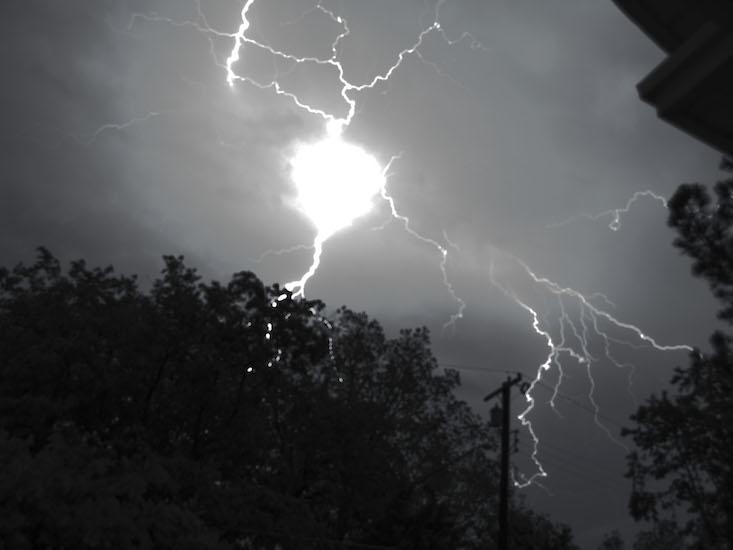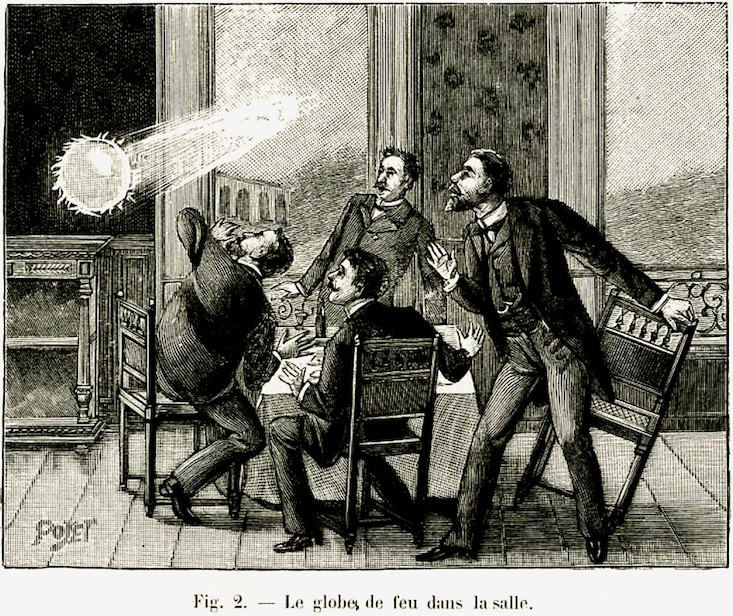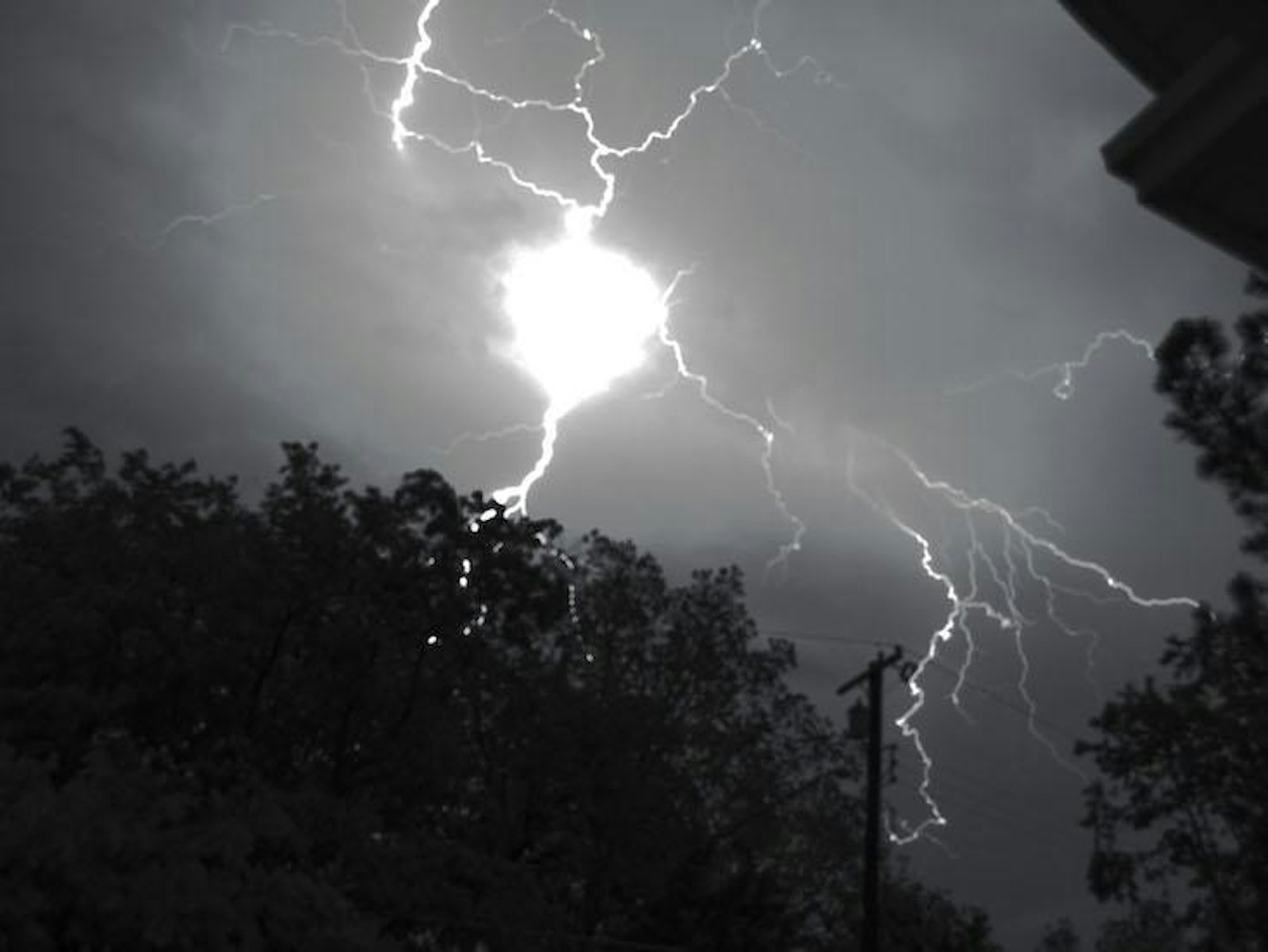
Every so often, given the proper conditions, a small and roughly spherical piece of the atmosphere around us will briefly catch fire. As they are best viewed late into the night and have no obvious natural explanation, it’s perhaps no wonder they’ve inspired a rich mythology. Names for balls of fire include ignis fatuus, will-o’-the-wisp, ghost lights, and ball lightning. They’ve been said to hover above graves, dance along the banks of rivers, signal the imminent arrival of an earthquake, and stalk the aisles of airplanes. Even today, we don’t have a crystal-clear understanding of how they form and do what they do. Which doesn’t mean scientists have, well, dropped the ball. Chinese scientist H.-C. Wu recently offered a compelling new explanation in Scientific Reports.
Some fireballs appear to be the products of living organisms. The decay of organic matter, for example, in marshes and other wetlands (or even a mass grave in a Polish forest) leads to the release of methane and phosphorus-containing gases such as phosphine, which can spontaneously catch fire after encountering oxygen in the atmosphere, producing a flickering light suspended midair. Some, on the other hand, are electrical in origin, sparking within the ground during an earthquake as stressed rocks release a stream of electrons to the surface where, interacting with air, they produce flashes of light. Still others form in the atmosphere, usually during thunderstorms, and go by the name of “ball lightning.”
Ball lightning comes in most colors of the rainbow and ranges in size—from a typical toy marble, to those extra large exercise balls some people sit on instead of office chairs. It can form inside closed spaces and move down chimneys and horizontally through closed windows. In addition to producing light, ball lightning can give off sparks and is associated with hissing or buzzing noises and a strong, irritating odor. It typically lasts for only seconds, glowing with the intensity of a bright household light bulb. The unpredictable and variable nature of ball lightning has made it difficult to develop a conclusive theory explaining how it works, but accounts of its strangeness are numerous and have been published for centuries.

In the spring of 1963, for example, the late astronomer Roger Jennison was aboard a late night flight through a storm when he witnessed the appearance of a basketball-sized ball of light shortly after lightning struck the plane. The ball “emerged from the pilot’s cabin and passed down the aisle of the aircraft,” he said, “maintaining the same height and course for the whole distance over which it could be observed.” In another instance, a woman from the United Kingdom reported she was sitting at home “when, without any warning, a great orange ball, rather like a big grapefruit but more orange and fluffy at the edges, came through the front window, which was closed and the blind also closed. It traveled horizontally at about shoulder height for about 10 seconds and was immediately followed by a clap of thunder just above me which was so loud that I shot out of my chair.”
The passage of ball lightning into homes via windowpanes and its ability to develop inside aircraft have proved to be challenging observations to come to grips with. Explanations for how ball lightning is formed are even more diverse than its physical characteristics. Just a sampling of the theories out there suggest the ball is a cloud of hot silicon particles, a natural nuclear reaction, a lightning-induced epileptic hallucination, a miniature black hole, an aggregate of cellulose and other natural polymers, and a microwave-filled bubble of plasma.
On the offhand chance the bubble is ruptured, microwaves can leak out and cause the ball to come to an explosive end.
Microwave bubbles were the focus of the paper by Wu, a scientist at Zhejiang University in Hangzhou, China. While researchers have previously proposed such bubbles could be formed by microwave radiation emitted from thunderclouds or atmospheric masers, Wu theorizes the microwaves instead arise from a bunch of electrons accelerated to speeds approaching the speed of light when the Earth is struck by lightning. Specifically, the electrons are accelerated by the strong electric field created as a channel of electrons moves stepwise from the base of a cloud toward the ground, just prior to the bright flash we know as a lightning bolt. “At the tip of a lightning stroke reaching the ground,” Wu says, “a relativistic electron bunch can be produced, which in turn excites intense microwave radiation.”
Regardless of their source, the atmospheric microwaves produce plasma by charging up the surrounding air. The radiation exerts sufficient pressure to push the plasma outward into a bubble, which we see as ball lightning. Microwaves trapped inside continue to generate plasma and so maintain the bubble for its brief lifetime. The ball lightning eventually fades as the radiation held within the bubble is dissipated. On the offhand chance the bubble is ruptured, microwaves can leak out and cause the ball to come to an explosive end.
The presence of microwaves and plasma as components of ball lightning can explain several of its properties. For example, microwaves can pass through panes of glass, which is why windows don’t bar the entrance of ball lightning. Microwaves also tend to make an audible noise when they encounter a person’s inner ear, and the plasma they produce will in turn generate acrid-smelling ozone from atmospheric oxygen.
What sets Wu’s microwave origin theory apart is that it explains how ball lightning can appear inside an aircraft. Electrons, being tiny relative to atoms, are able to pass through the metal shell of an aircraft after being accelerated outside of it via a lightning strike. Microwaves are then emitted by the souped-up electrons inside where they form ball lightning. The electron-microwave-plasma pathway also explains the size of ball lightning, since the length of the electron bunch sped up by a lightning strike matches up with the typical 20-50 centimeter diameter of the resulting microwave bubble.
As is ever the case for science, more work needs to be done to firm up Wu’s theory. It’s based on particle simulations, so experiments will be necessary to verify the proposed electron-microwave-plasma mechanism by which ball lightning is formed. This includes figuring out a good way to create ball lightning via lightning strikes on demand and then looking for high-speed electrons as well as microwaves. If it holds, Wu says, the theory raises important questions about the hazards posed by high-energy electrons and microwave radiation being generated near people caught in lightning storms.
Chris Drudge is a science writer from Canada. Follow him on Twitter @RosinCerate.
This classic Facts So Romantic post was originally published in July 2016.






























